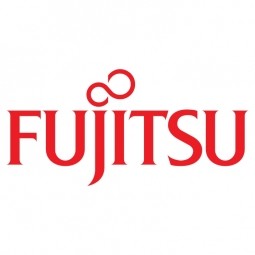下载PDF
Real-Time IoT Tracking and Visualization Improve Manufacturing
技术
- 分析与建模 - 计算机视觉软件
- 分析与建模 - 过程分析
- 分析与建模 - 实时分析
- 功能应用 - 远程监控系统
- 传感器 - 相机/视频系统
适用行业
- 电子产品
适用功能
- 离散制造
- 质量保证
用例
- 资产跟踪
- 视觉质量检测
挑战
富士通的全资子公司、领先的商用笔记本电脑和平板电脑制造商 Shimane Fujitsu 着手改进工厂检查发现产品错误的流程。根据发货日期确定产品返工的优先级是一项挑战,它导致 Shimane Fujitsu 产生了额外的运费。该公司需要一种收集数据的方法,以更好地跟踪返工周期中产品的位置,并实时监控进度。收集到的数据还将有助于对未来改进进行过程分析。
客户
岛根富士通
关于客户
Shimane Futjisu 是日本最大的制造商之一,生产从系统板到成品的笔记本电脑和平板电脑。它经营着两个 23,000 平方米的工厂,拥有 1,100 名工人。多种型号的商务笔记本
解决方案
富士通集团和英特尔联合开发了使用富士通云服务物联网平台和英特尔物联网网关产品的解决方案。第 1 阶段涉及在确定要返工的产品上使用物联网传感器。该解决方案提供网络区域的可视化地图,包括有关每个产品的位置和状态的信息。借助富士通的分布式服务平台技术,可以通过生产信息控制系统实时处理大量传感器数据。正在进行的试点阶段 2 包括收集检查过程的视频图像以供以后分析,以更好地了解与返工产品相关的错误有时无法重现的原因。
收集的数据
Asset Location, Asset Registry, Fault Detection, Tracking Of Assets
数量效益
相关案例.

Case Study
Remote Temperature Monitoring of Perishable Goods Saves Money
RMONI was facing temperature monitoring challenges in a cold chain business. A cold chain must be established and maintained to ensure goods have been properly refrigerated during every step of the process, making temperature monitoring a critical business function. Manual registration practice can be very costly, labor intensive and prone to mistakes.

Case Study
Cloud Solution for Energy Management Platform-Schneider Electric
Schneider Electric required a cloud solution for its energy management platform to manage high computational operations, which were essential for catering to client requirements. As the business involves storage and analysis of huge amounts of data, the company also needed a convenient and scalable storage solution to facilitate operations efficiently.

Case Study
Leveraging the IoT to Gain a Competitive Edge in International Competition
Many large manufacturers in and outside Japan are competing for larger market share in the same space, expecting a growing demand for projectors in the areas of entertainment, which requires glamor and strong visual performance as well as digital signage that can attract people’s attention. “It is becoming more and more difficult to differentiate ourselves with stand-alone hardware products,” says Kazuyuki Kitagawa, Director of Service & Support at Panasonic AVC Networks. “In order for Panasonic to grow market share and overall business, it is essential for us to develop solutions that deliver significant added value.” Panasonic believes projection failure and quality deterioration should never happen. This is what and has driven them to make their projectors IoT-enabled. More specifically, Panasonic has developed a system that collects data from projectors, visualizes detailed operational statuses, and predicts issues and address them before failure occurs. Their projectors are embedded with a variety of sensors that measure power supply, voltage, video input/ output signals, intake/exhaust air temperatures, cooling fan operations, and light bulb operating time. These sensors have been used to make the projector more intelligent, automatically suspending operation when the temperature rises excessively, and automatically switching light bulbs. Although this was a great first step, Panasonic projectors were still not equipped with any capability to send the data over a network.








